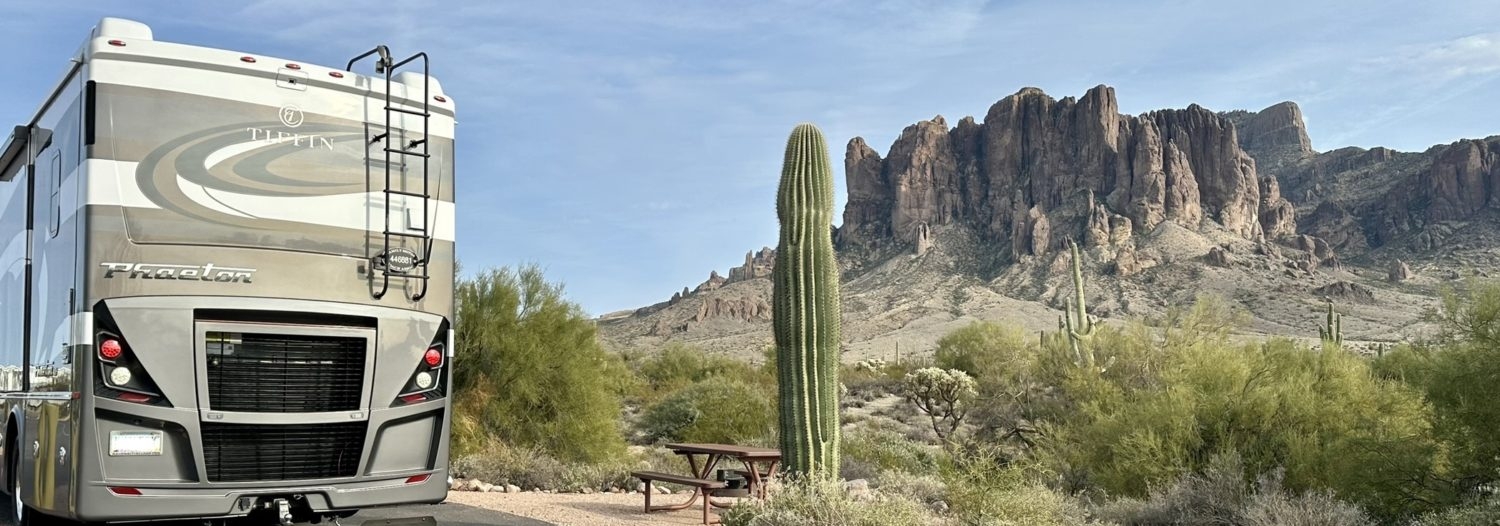Ugh is right.
You’re tailgating the rivalry football game or camping at a rally and the guy next to you fires up his generator. Not a big deal until you are getting asphyxiated by his generator exhaust. Who has experienced this? Who has been “that guy?”
Living on the face of the sun, aka Arizona, means running the air conditioner while tailgating the ASU game. When we had our Class C, there wasn’t much room inside for people to get comfortable so 90% of our tailgating was outside. We rarely ran the generator but always got to experience our neighbor’s exhaust. Not once did we get to park next to someone who had an exhaust diverter. We made nice with the parking lot attendants and were allowed to park on the opposite side of the parking lot which helped a lot with the fumes. That was the year our son broke his ankle playing volleyball and was in a walking boot so they parked us closer to the stadium than where they normally parked the RV’s.
One of our last trips in the old Minnie was to the Albuquerque Balloon Fiesta where everyone had one. And I mean everyone, everyone but us. We ran the generator minimally, just enough to keep the batteries charged and shower. Thankfully, we knew our neighbor and let them know our plan so we didn’t gas them out.
 Once again we go to my in-law’s motor home for all the latest gadgets and must-haves. They were parked on the right side of us at the Balloon Fiesta and we watched him set up this super fancy hose contraption thing on his rig. Mark looked at me with the look of, “We have to get one of these!” Little did I know in a few short months our Minnie would be replaced with the fancy new to us Phaeton and shortly after that, a fancy generator exhaust diverter.
Once again we go to my in-law’s motor home for all the latest gadgets and must-haves. They were parked on the right side of us at the Balloon Fiesta and we watched him set up this super fancy hose contraption thing on his rig. Mark looked at me with the look of, “We have to get one of these!” Little did I know in a few short months our Minnie would be replaced with the fancy new to us Phaeton and shortly after that, a fancy generator exhaust diverter.
But a generator exhaust diverter isn’t just for close camping!
We can’t always stay with full hookups. Let’s face it, some of the prettiest places on earth to camp don’t have any kind of hookup. One of my favorite places to camp is nestled among the tall pine trees in the Arizona mountains. Even though we circle camp when in the woods or desert, it’s still much better to vent the fumes up and away from everyone rather than letting them hang low to the ground.
Our diverter of choice is the Gen-Turi brand found on Amazon. https://www.amazon.com/Camco-Gen-Turi-Generator-Exhaust-Disconnect/dp/B000BUU5XG/ref=sr_1_1?ie=UTF8&qid=1511884617&sr=8-1&keywords=gen+turi+generator+exhaust+system

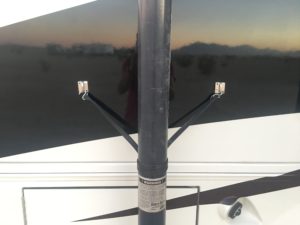
It comes with suction cup holders and they did okay, not great so we went back to Amazon and bought the permanent stick-on holders. We found the suction cup ones came loose if it was windy. I wonder if they would stick better or worse in super humid environments. You may want to start with them straight away. These pictures show the permanent adhesive strap holders.
When it arrived and we took it out of the box, I have to admit I wondered how the heck it was going to work. I’m a visual person and I wasn’t picturing it in my head very well.
The storage bag is handy as it keeps all the parts and pieces in one place which we all know is very (very) important in any type of RV.
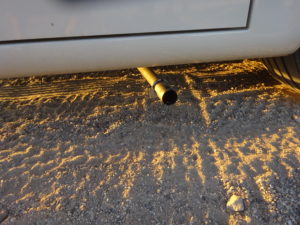

As with most things RV related, setting it up the first time took the longest. Our generator exhaust had a cap on it that pushed the fumes down to the ground which had to be removed. Mark was able to pull it off without any issue. Then he attached a bracket to the exhaust pipe. This bracket is what the exhaust diverter will attach to every use. From there we pushed the pipes together and onto the bent piece that attached to the bracket. We put the suction cups on and fired up the generator.
The instructions called for putting a few small pieces of paper into the little open part where the bent piece is while the generator was running. If it was set up and working correctly, those little pieces of paper would travel up the tubes and exit at the top.
Woo-Hoo! It worked on the first try! An engineering feat I tell ya.
When you’re done and ready to break camp, disassembling is a snap. An important tip from Mark: wear gloves. He says your hands will get dirty taking apart the lower part if you don’t.
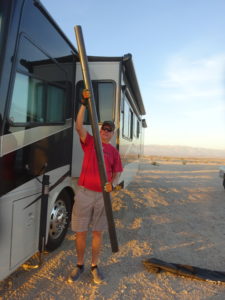
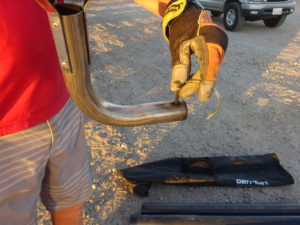
First, pull off the tall tubes, separate and lay on the ground. Next, remove the lower part, separate and lay on the ground with the other parts. Finally, put all the parts in the handy bag and put away for next time.

May all your dry camping be generator exhaust free!
